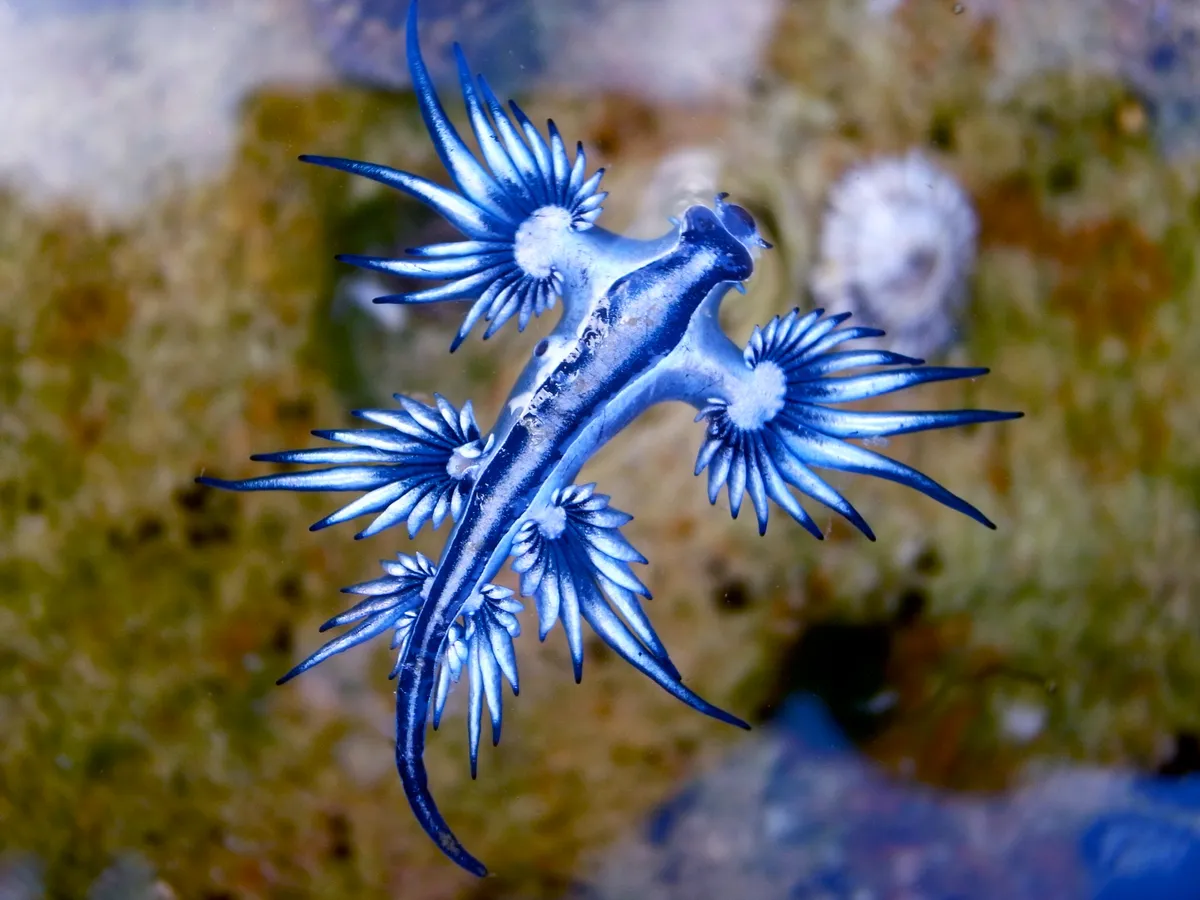The ocean is teeming with life and animals, many of which are so captivating and colourful they look like tiny, exquisite jewels.
We take a closer look at this watery world and explore some of the smaller enchanting sea creatures that call the ocean their home.
Prettiest sea creatures
Japanese firefly squid
Few scientific names ring quite as true as Watasenia scintillans. In spring vast numbers of these little cephalopods migrate inshore to lay their eggs in the shallow waters off Japan, illuminating the waves with blue light: A scintillating scene indeed.
Their common name, Japanese firefly squid, is also apt. The light show is powered by chemistry similar to that harnessed by their terrestrial namesakes. Each squid is polka-dotted with about 800 light-emitting photophores, which can be flashed in unison or in choreographed sequences for the purposes of courtship, defence and attracting prey. Theirs is a bitter sweet story, however, as this ostentatious flourish is the last thing they do before they die.
Flamboyant cuttlefish

Flamboyant cuttlefish are known for their gaudy colour, their ability to use their fins to walk along the seafloor, and, as with all cuttlefish, their ability to change colours.
The tiny animals, which only reach about 8cm long, are also popular with scuba divers because they’re so adorable.
Watch a tiny flamboyant cuttlefish hatching from its egg.
Nudibranchs

There are few groups of animals or plants are as consistently gorgeous as the marine animals known as nudibranchs.
Nudibranchs are a type of soft-bodied, marine gastropod mollusc known for their vibrant colours and intricate patterns and are found in oceans worldwide, from shallow reefs to deep sea.
Mandarin fish

The Mandarin fish (Synchiropus splendidus) stands out thanks to its vibrant hues of blue, orange, and green.
Found in the shallow waters of the western Pacific, Mandarin fish engage in a spectacular mating ritual at dusk, showcasing their flamboyant colours and delicate movements.
Much like the flamboyant cuttlefish, their beauty and unique behaviours make them a favourite among divers.
Lionfish

One of the deadliest animals in the sea, the lionfish is as beautiful as it is deadly. For within its beautiful softly fluttering fins are more than a dozen spines able to deliver a dose of powerful venom that causes extreme pain and, in rare cases, symptoms including temporary paralysis, shortness of breath and nausea.
Leafy sea dragon

How beautiful is the leafy sea dragon? These elaborate, ornate creatures, (not to be confused with seahorses), look like they belong in a ballet, adorned with all their frills.
They live off the coasts of southern and western Australia where their frills, which are designed as camouflage, allow them to remain hidden among the floating seaweed.
Ribbon eel

It's quite easy to see how this creature got its name, for it does really resemble a piece of satin blue and yellow ribbon.
Up to a metre in length it lives in the Indo-Pacific ocean and enjoys a diet of shrimps and small fish.
Sea sapphire
The problem with courtship displays is that they can be as eye-catching to predators as to potential mates. The display of sea sapphires, though, has an off-switch.
These crustaceans are almost entirely transparent, yet the males signal to females with a dazzling iridescence, produced when sunlight reflects off layers of hexagonal crystals within their tiny bodies. The precise colours depend on the distance between the layers, and while yellow, orange and red dominate nearer the surface, green, blue and violet are more effective at depth. The show occurs only when light strikes at certain angles, enabling the animals to return to invisibility in the blink of an eye.
Elvis worms

If you’re anything like me, you probably can’t help falling in love with Elvis worms and their stunning, sparkly costumes - and it's easy to see how they earned their names.
Peinaleopolynoe elvisi belong to a genus known as hungry scale worms, and were discovered recently in the abyss, on the remains of a dead whale.
Blue dragon sea slug

This small but strikingly beautiful marine creature found in temperate and tropical ocean waters is a fierce predator that feeds on venomous prey like the Portuguese man o’ war, storing the stinging cells from its prey in its own tissues for defense. This ability allows it to deliver a painful sting to potential threats, including humans.
Looking for more fascinating animal-themed round-ups?
Check out the weirdest sea creatures, blue animals and the deadliest sea creatures.





